Rhinoplasty is used to heighten the nasal bridge and tip by inserting safe materials such as gore-tex, silicone or ear cartilage.
The biggest advantage of open rhinoplasty is being able to see the inner structure of the nose, but it may cause more bleeding and scarring. Furthermore, the recovery process can be longer.
With 23 years of clinical experience in Korea, CDU Noscar rhinoplasty provides fast recovery without a scar and without opening the nose, by precisely figuring out the nose structure. Most rhinoplasty at CDU Plastic Surgery Korea uses a closed method, which is CDU’s signature technique.
Surgery Duration
Approx. 60 min
Hospitalization
No
Stitches Removal
After 7 Days
Anesthesia
Local and Sedation
Recovery Period
7 Days
Closed vs. Open Rhinoplasty


Closed Rhinoplasty
- This surgery is more difficult than the open method because the incision is only made inside the nose, which requires a much more advanced surgery technique.
- Chances of rejection reaction and complications are minimized by reducing the size of the surgical site and the length of the incision.
- No visible external scar.
- Less bleeding through a minimal incision.
- Less swelling and bruising.
Open Rhinoplasty
- The incision is made inside and outside on the columella.
- The structure of the nose can be checked easily and a precise diagnosis can be made.
- Possibility of scarring.
Rhinoplasty using SOFTXiL

CDU's Research and Development
SOFTXiL is the only FDA and CE approved implant in Asia, developed by CDU’s medical team through several years of medical research.
Now, more than 70% of plastic surgery clinics in Korea are using SOFTXiL implants. CDU’s medical team are the most knowledgeable about the implant characteristics, which allows us to provide a comparatively low revision rate and outstanding patient satisfaction.
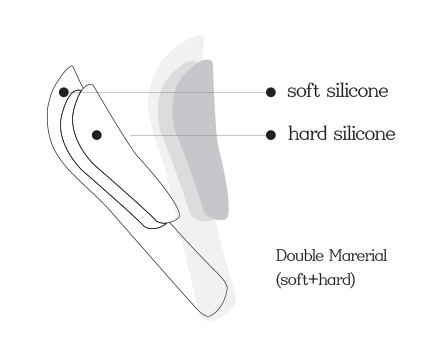
Surgery Process

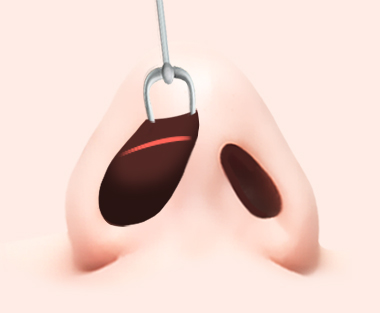
An incision is made on the inside of the nose.
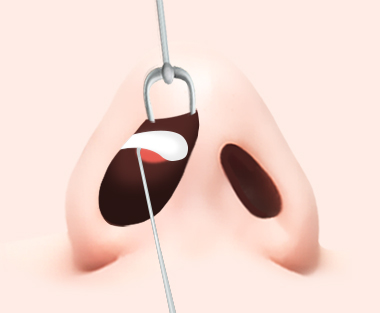
The skin is separated from the alar cartilage and the nasal bone.
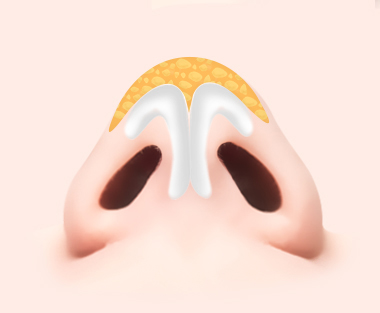
The perio steum is separated where the implant is inserted. Excess fat and soft tissues are removed if necessary.
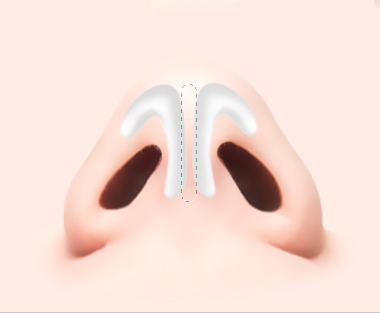
The most ideally shaped implant is inserted underneath the periosteum, and the tip is heightened with cartilage or Alloderm.
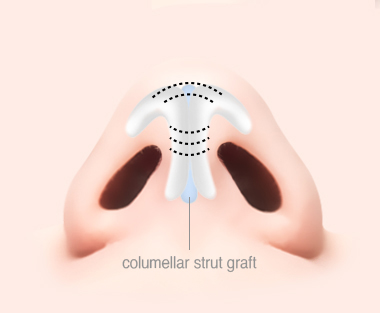
Alar cartilage sculpturing technique + columellar strut graft.
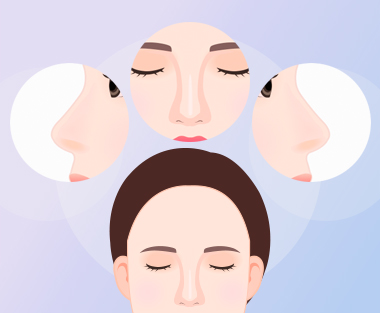
Before closing the wound, the final shape is checked from all angles and decided through discussion with the patient by using a three-dimensional mirror.
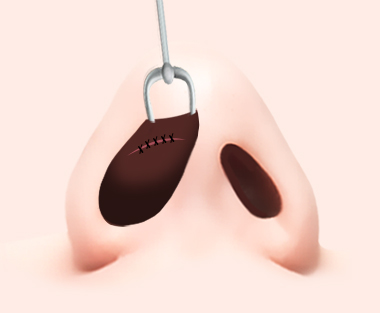
The wound is closed.

Specific surgical bandages and a cast is applied to prevent deviation of the implant.
CDU’s Outstanding Technical Skills

How can a beautiful, safe and higher tip be maintained for a long time with ear cartilage?
There are many materials that can be used for tip plasty: ear cartilage, septal cartilage, rib cartilage, donated rib cartilage, artificial dermis, and so on. Many people know that to achieve a high and defined tip, we may consider rib cartilage. However, by strengthening the alar cartilage itself, the result becomes much more noticeable and lasts longer.
Throughout 20 years of clinical experience, CDU Plastic Surgery Korea has developed a remarkable technique to maintain the beautiful tip for a long time.
1. Strengthening the alar cartilage with stitches
It is generally known that the Caucasian nose is higher and stronger than the Asian nose. In fact, during the surgery, when we open the nose, the size of alar cartilage between Asians and Caucasians is not very different. This means how we strengthen the tip determines the shape and height of the tip. In many cases, septal or rib cartilage is used for a higher and stronger tip, but the tip becomes stiff and unmovable.
With our remarkable technique, the nose done at CDU Plastic Surgery Korea maintains its immediate post-surgery height for a long time, and is high enough and soft enough with ear cartilage.
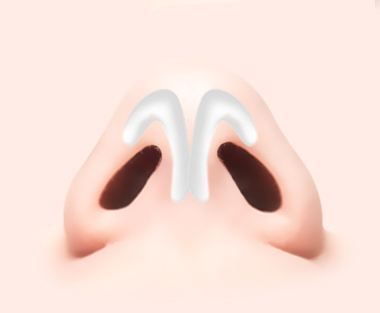
1. The tip is heightened by gathering alar cartilage (Alar sculpturing technique)
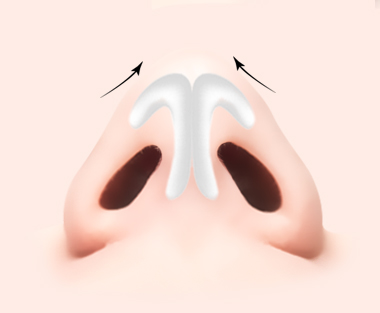

2. If method 1 is not sufficient to strengthen the alar cartilage, a strut with ear cartilage can support the alar cartilage.

2. Preventing tip droopiness caused by the pressure of the implant
Although the alar cartilage is well-strengthened during the surgery, when the implant and the cartilage meet directly, the tip may be weaker and droop down due to pressure, and the skin on the tip can become thinner and thinner over time.
At CDU Plastic Surgery Korea, by wrapping the end of the implant with ear cartilage, the skin around the implant can be reinforced, and the tip can be maintained well.
Various Materials for Rhinoplasty

Artificial Prosthesis
Silicone Implant
A silicone implant is the most commonly used material for rhinoplasty. The silicone implant is able to carve the shape minutely. The shape and the size won’t change with time. It is a comparatively safe material, but the border of the implant can be visible depending on the height of the implant.
Goretex
Gore-tex has been used for more than 30 years for the purpose of vascular surgery and the safety of this material has been proven. Generally, Gore-tex is recommended to patients with thin skin because it is softer than the silicone implant, achieving a natural shape after surgery.
Minute pores on the surface allow the gore-tex to assimilate well with body tissues, lowering the rate of complications and adverse reactions to the foreign body.
However, with time, the shape may change and the gore-tex can become harder in the body. Additionally, it is more complicated to remove once Gore-tex is settled.
Donated Tissue
Donated Rib Cartilage
Donated rib cartilage is an FDA-approved safe material, which is donated by donors. Donated cartilage is processed with an ergonomic method, removing all causes of complications and adverse reactions.
Donated dermis (Alloderm, Megaderm)
The donated dermis is an FDA approved safe material, which is donated by donors. Donated skin is processed with an ergonomic method, removing all causes of complications and adverse reactions. This material is used to achieve a natural nose shape, which is especially appropriate for tip plasty.
Autologous Tissue
Autologous Dermis
The autologous dermis is generally harvested from the groin or the buttocks. This is used to raise the nose when the skin around the nose is very thin. By using this material, a defined and slim nose may not be achieved, but the feeling is very natural to the touch.
Autologous Cartilage
This has been frequently used by many surgeons due to lower complication rates, and a natural feeling in touch and shape. For rhinoplasty, ear, septal and rib cartilage is commonly used. Of these materials, ear cartilage barely leaves scars, but rib cartilage normally leaves scars during the process of harvesting the cartilage.

